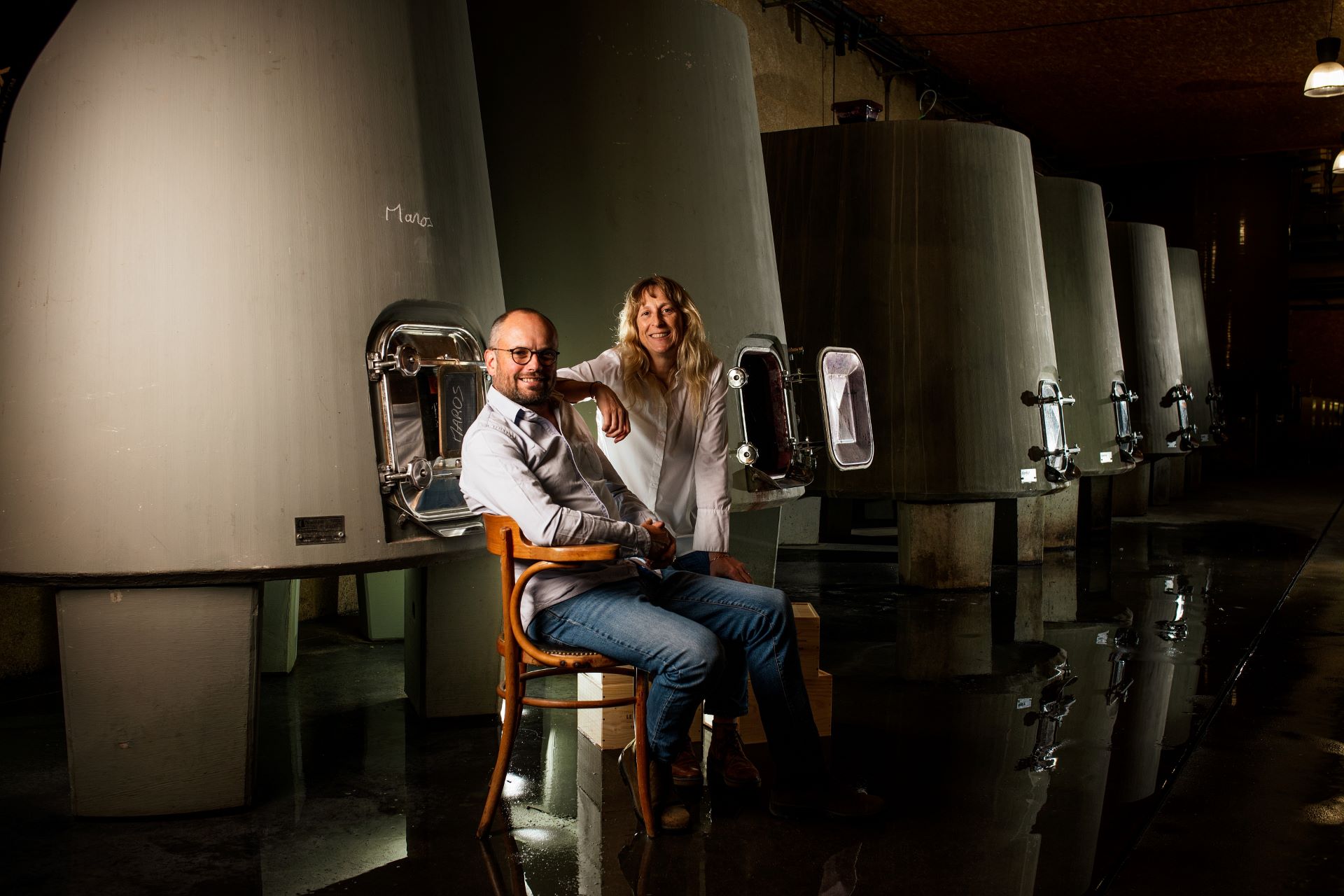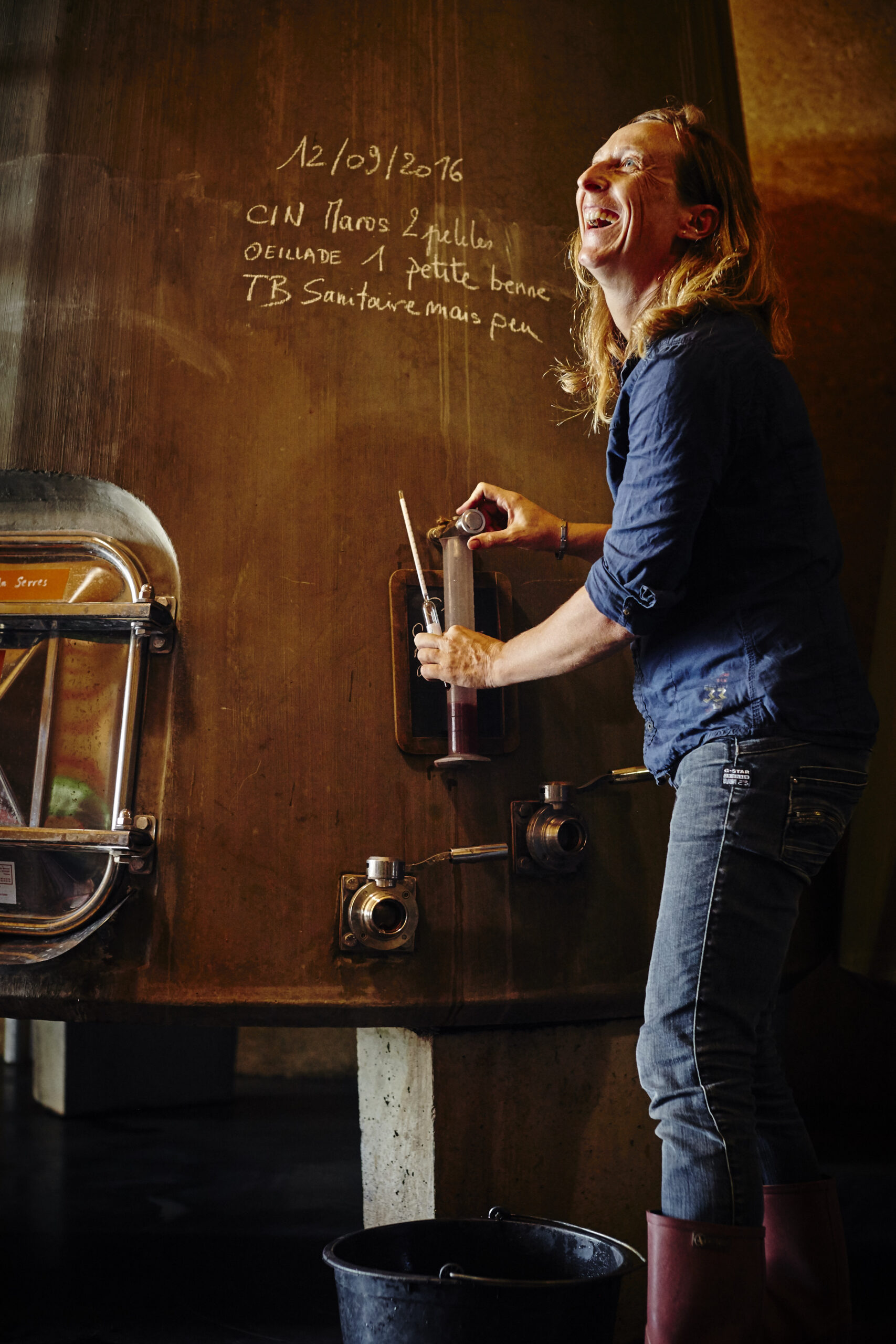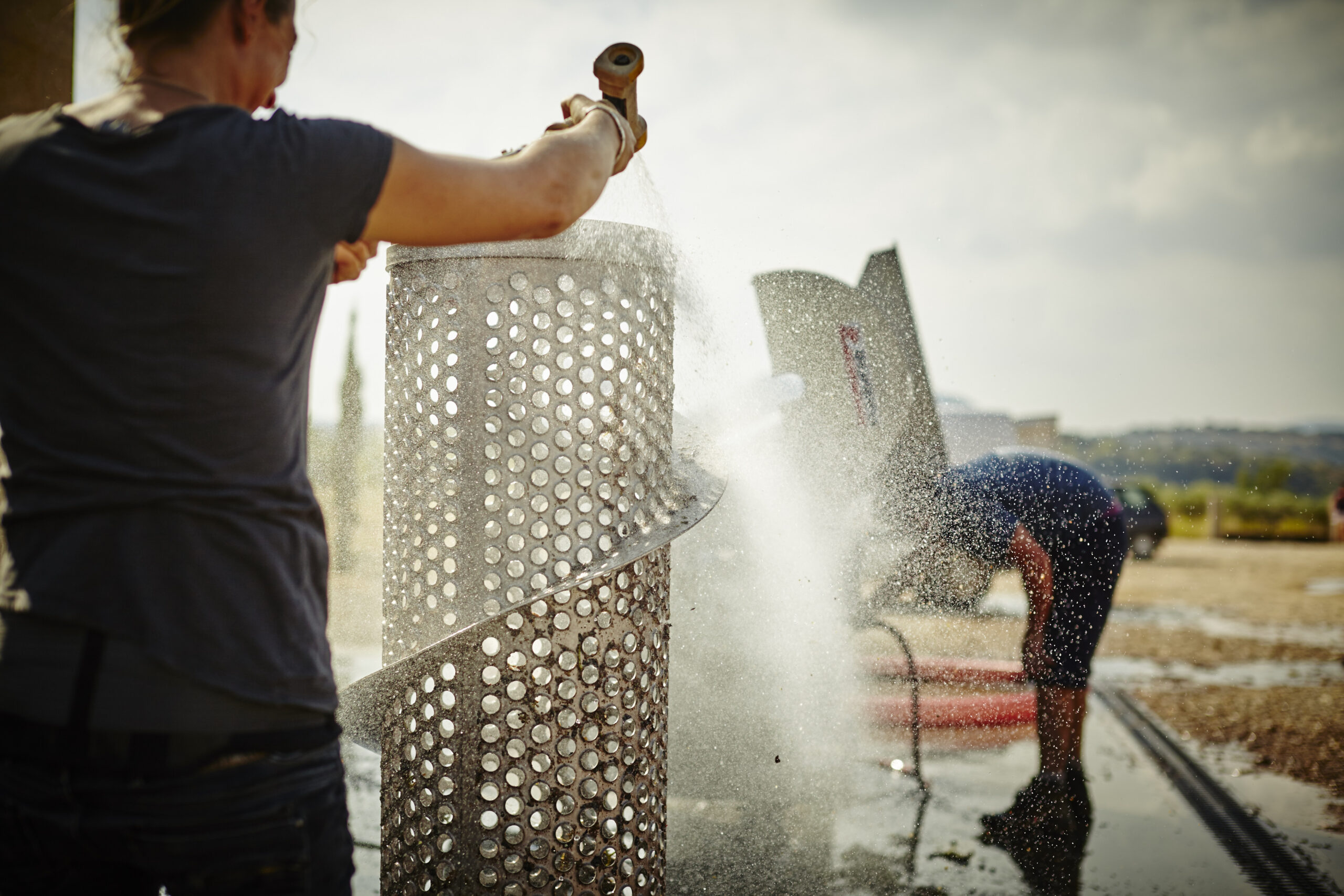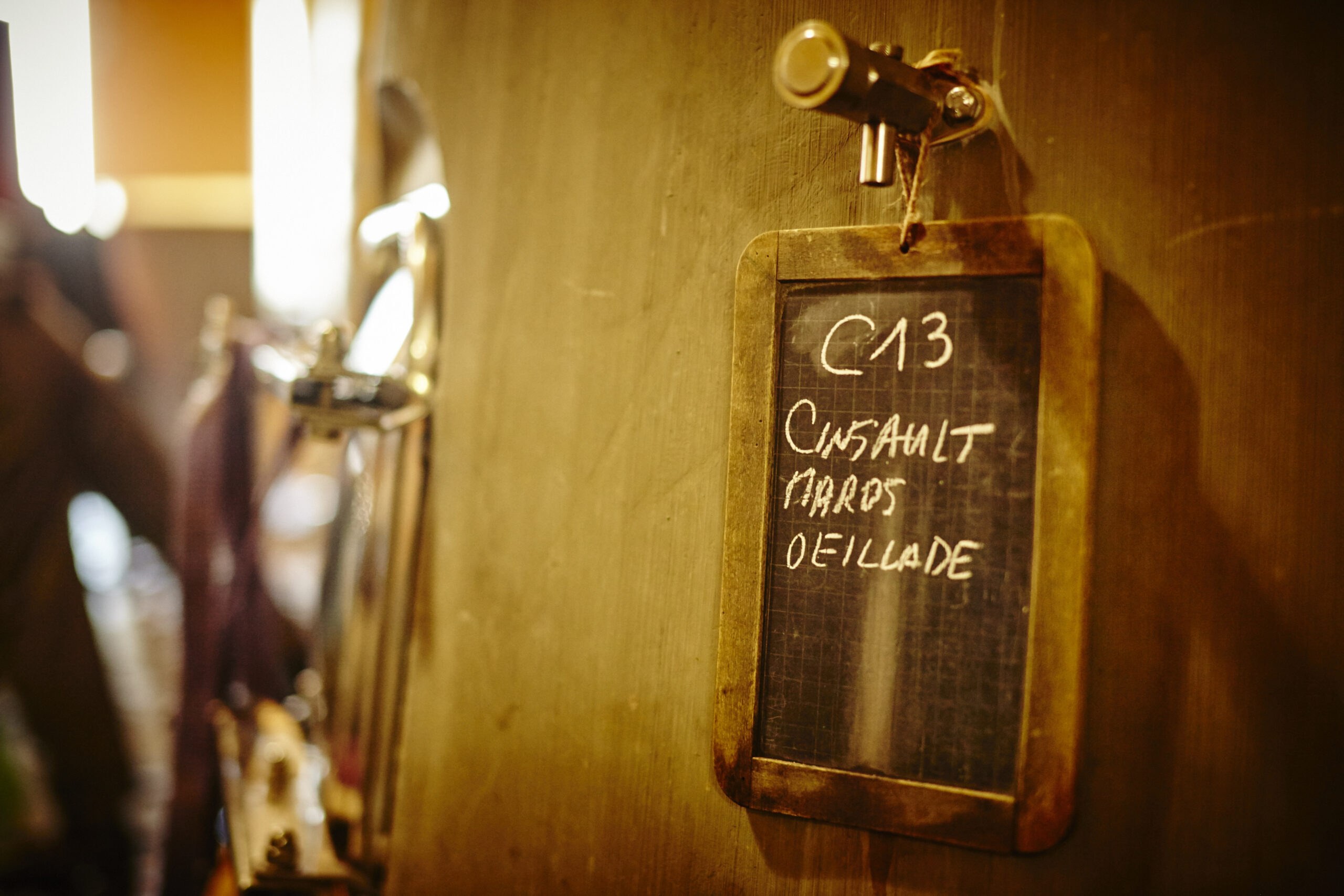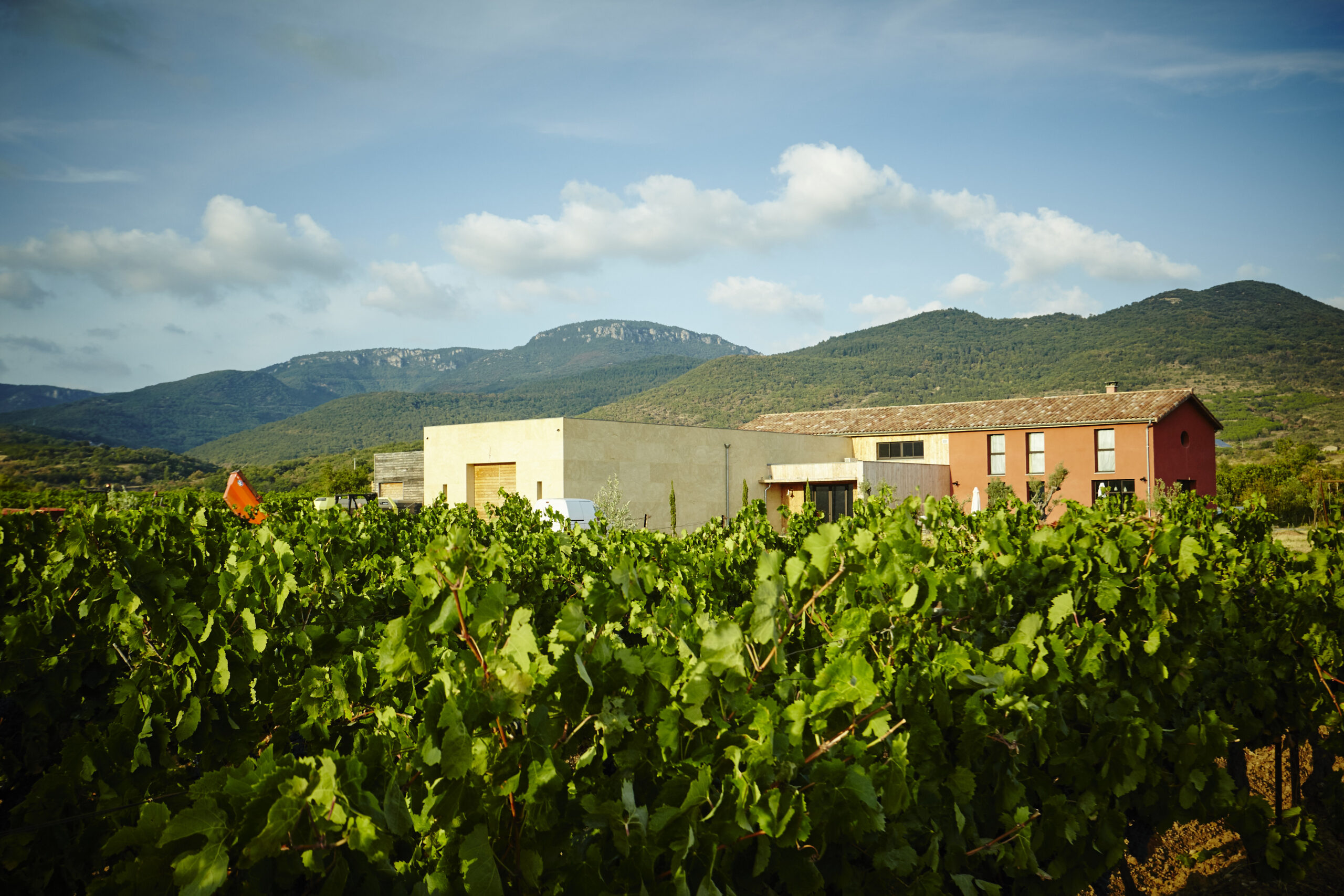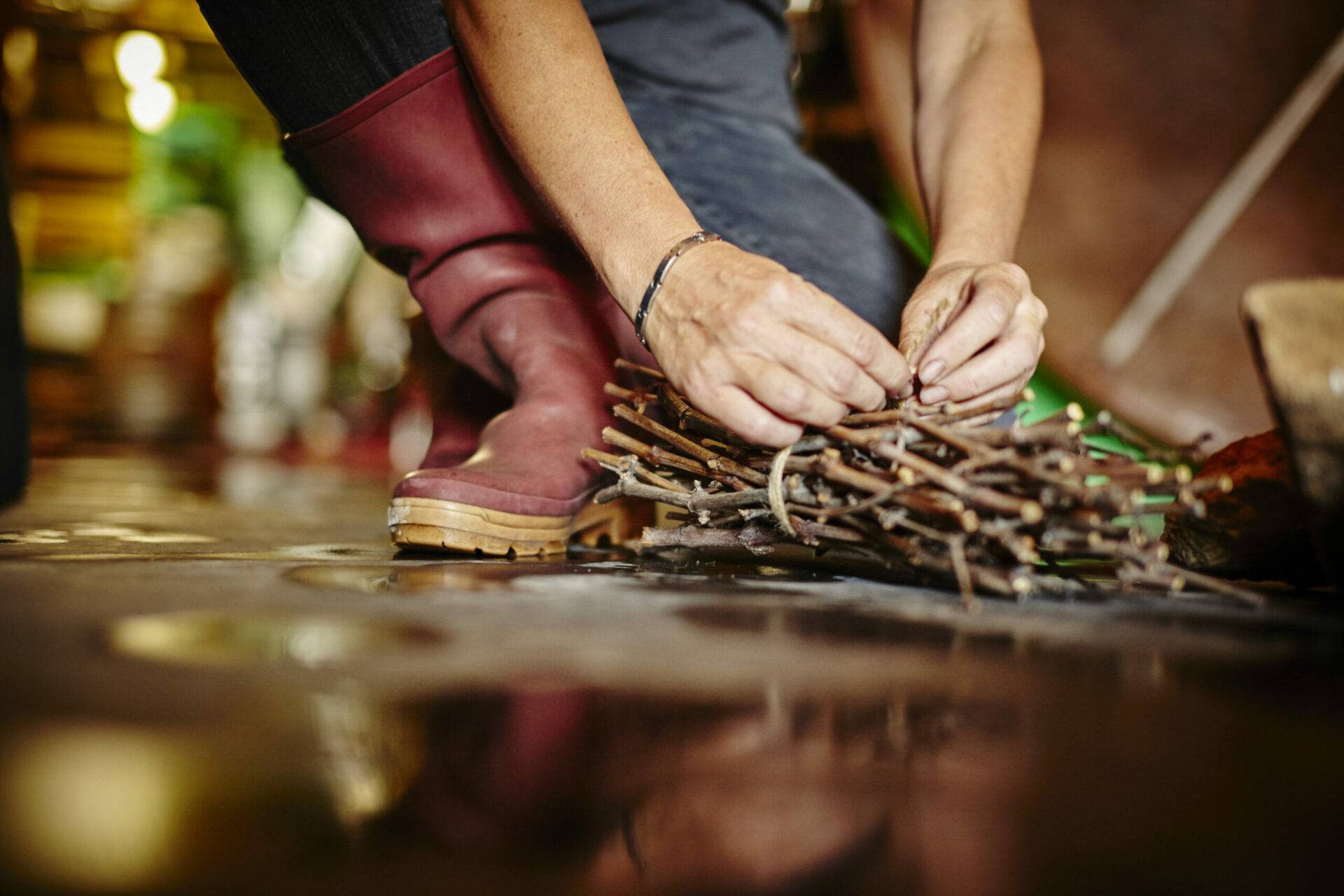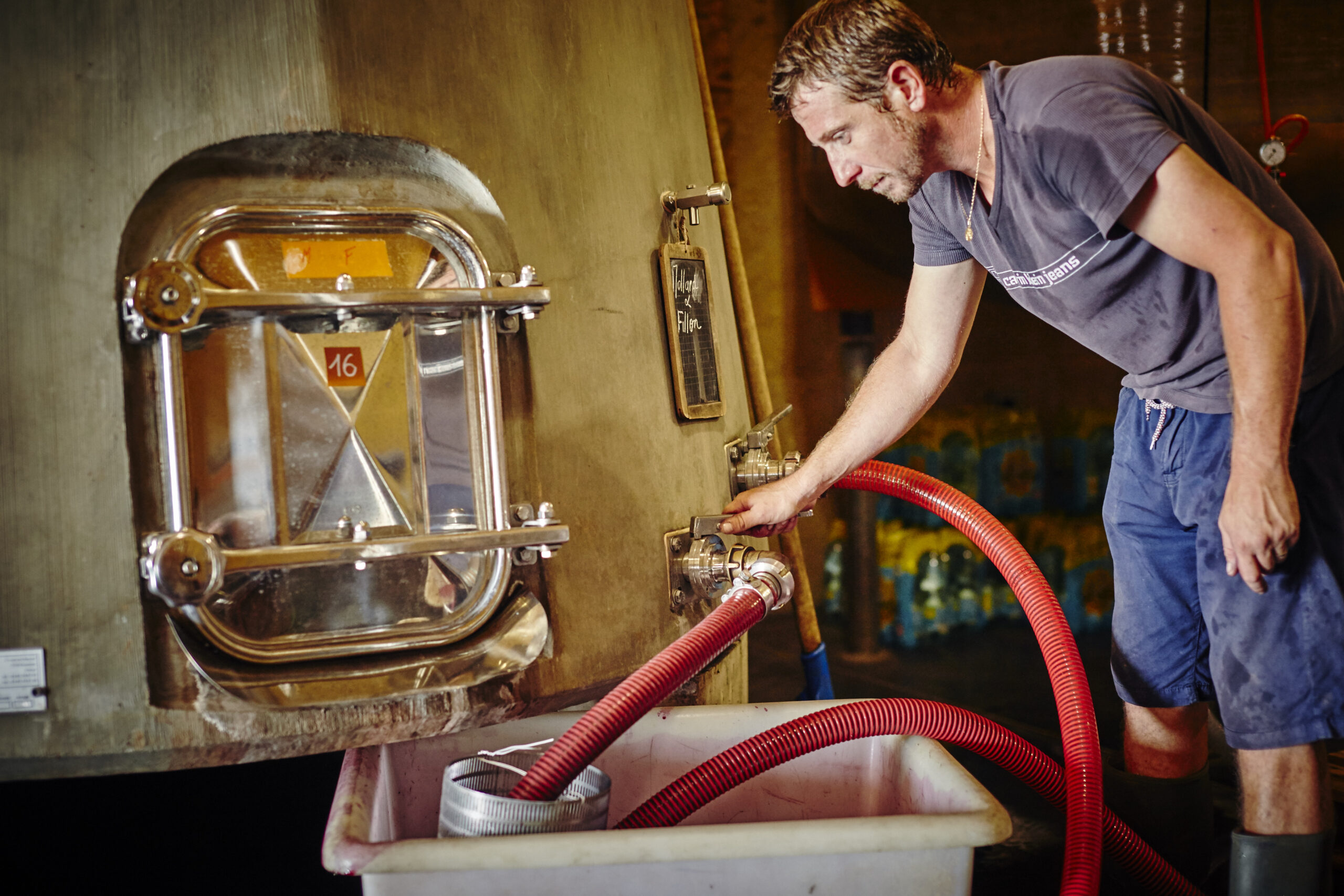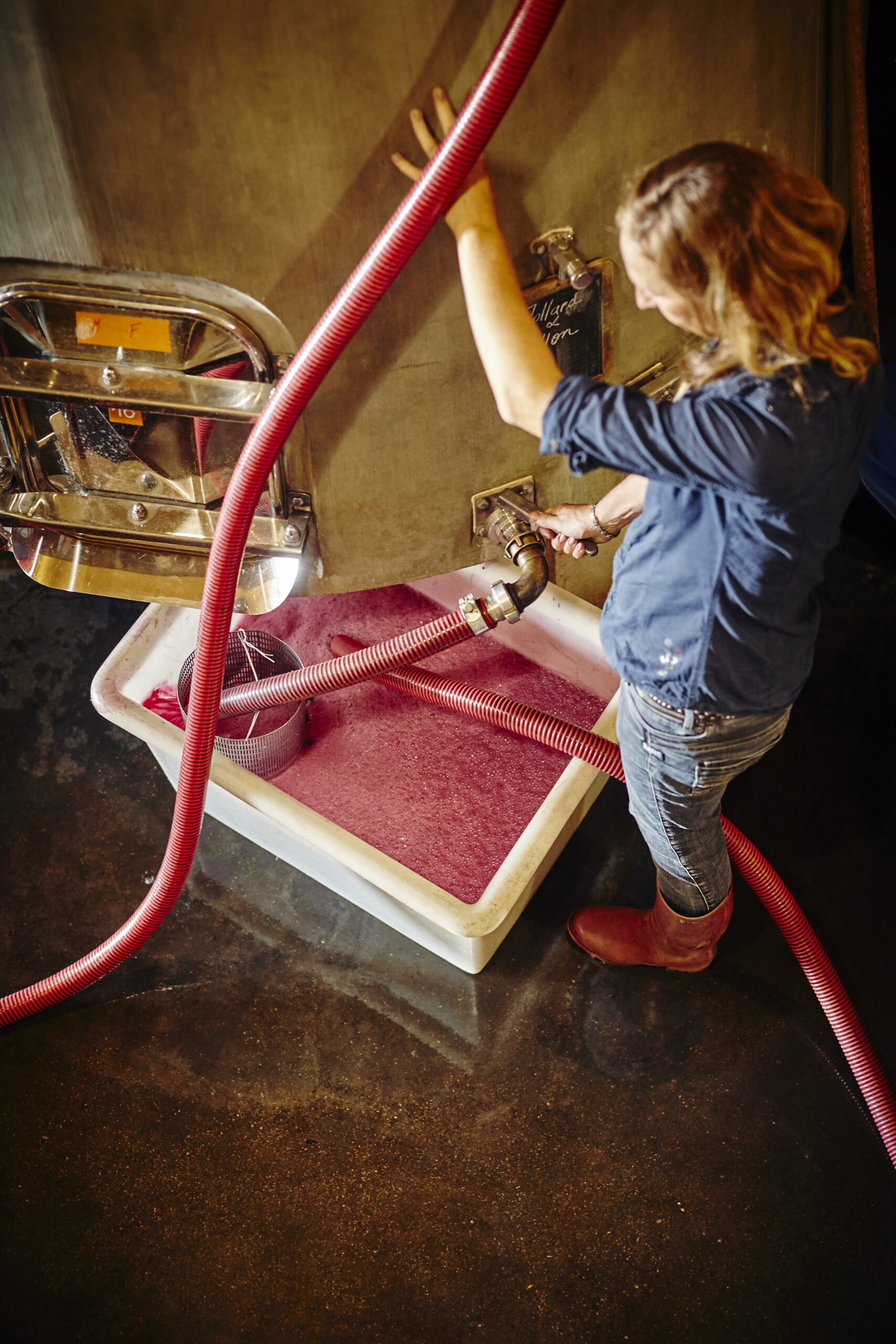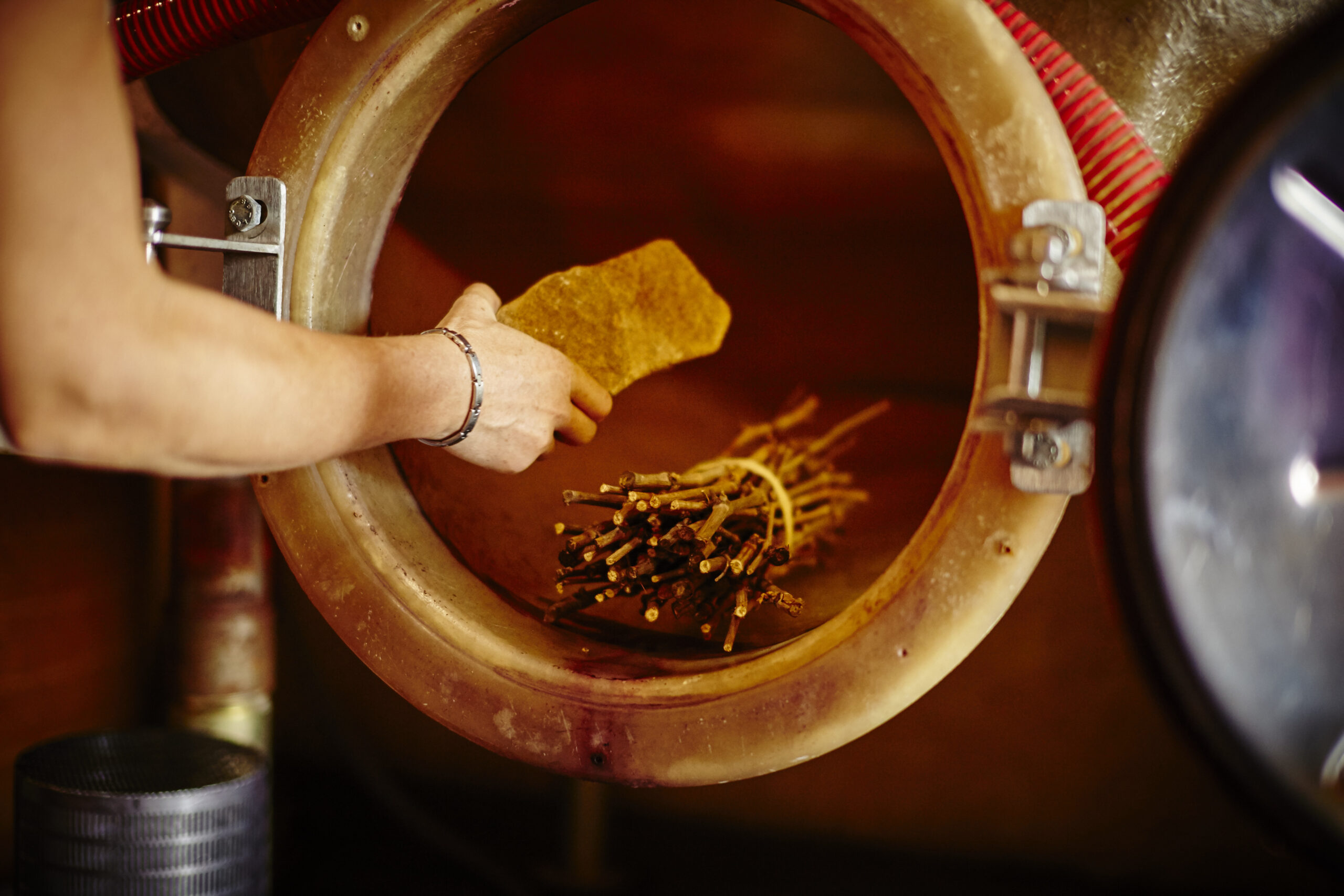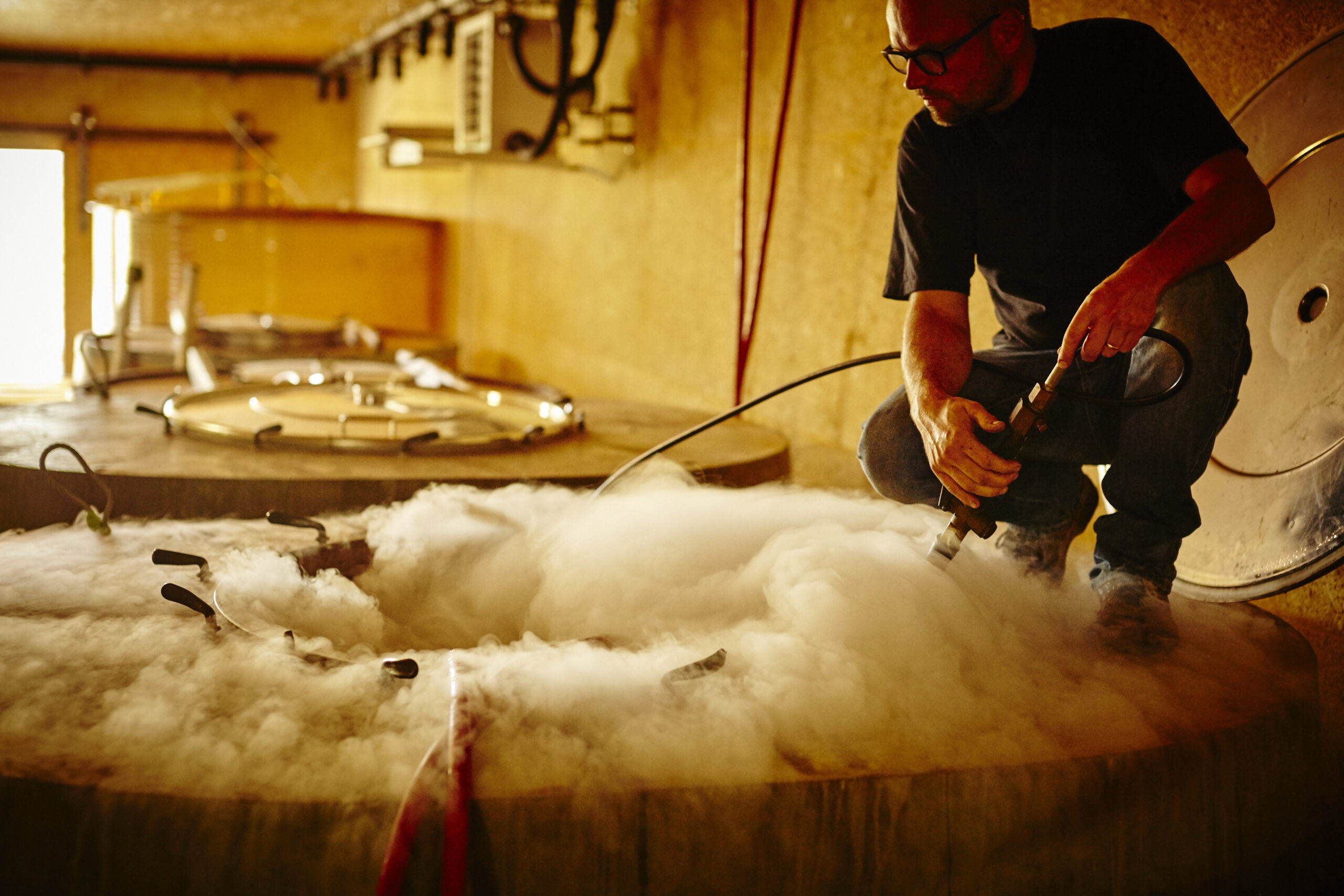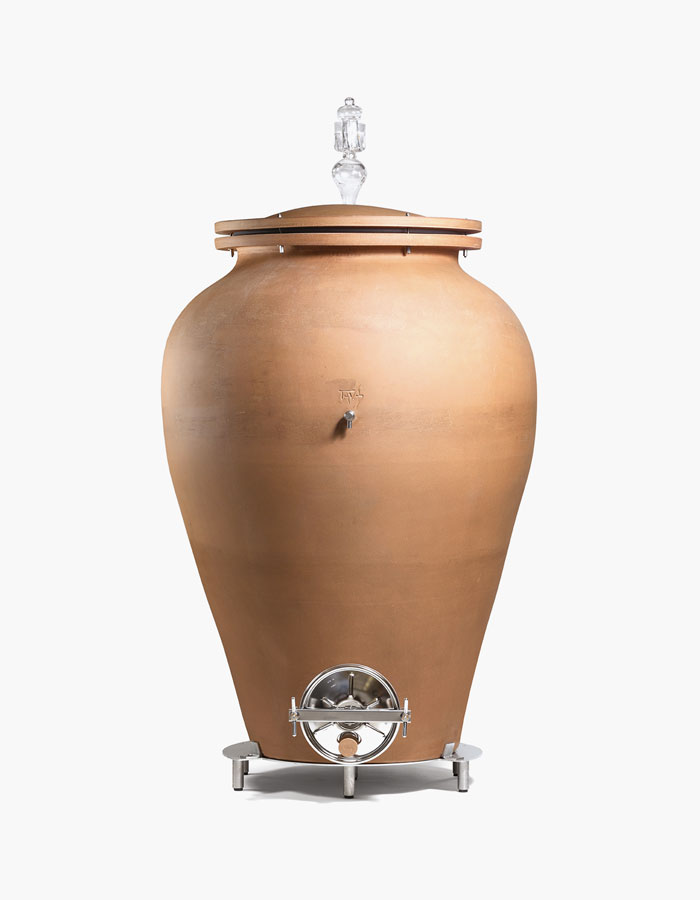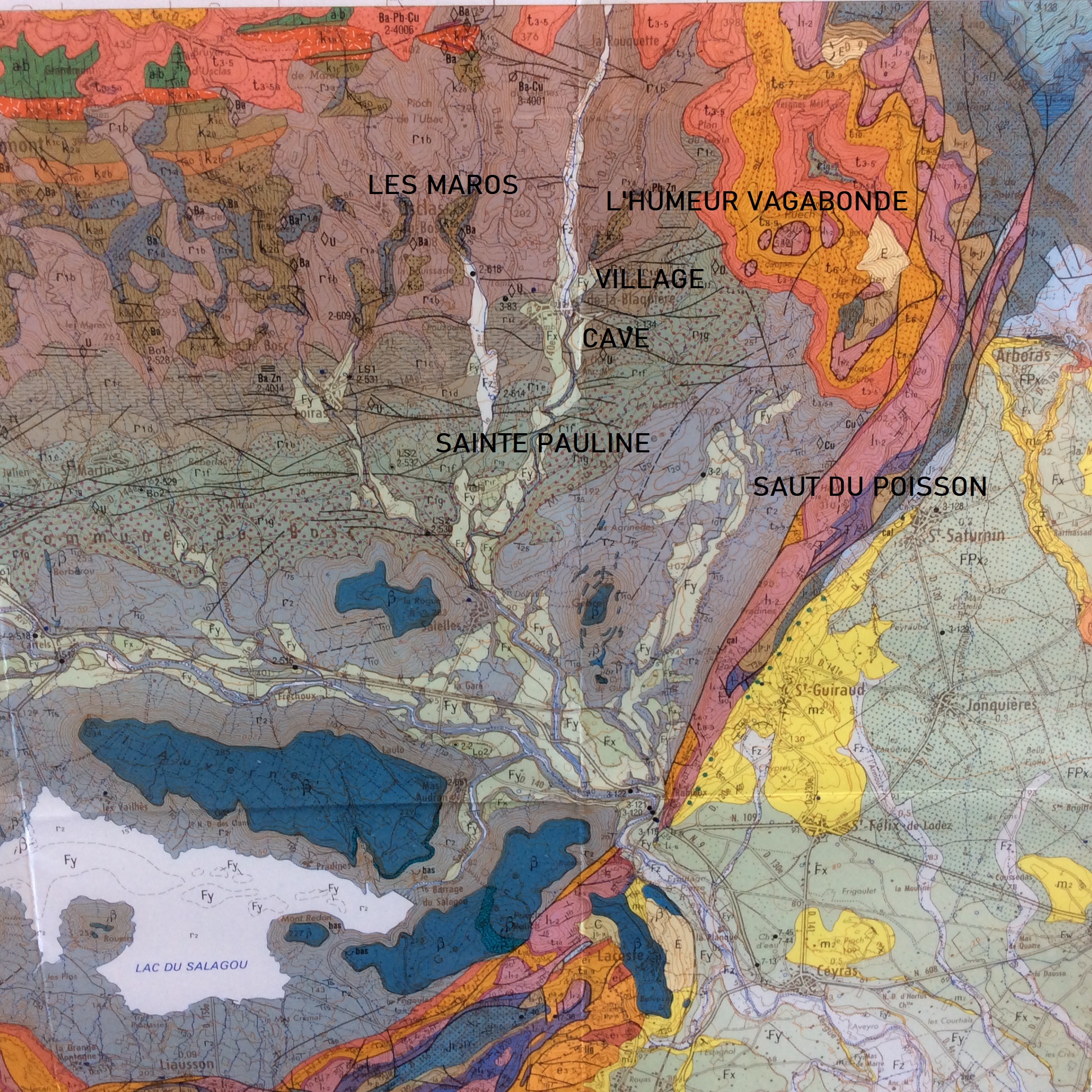We pick all 15 parcels by hand. Probably later than elsewhere. Dates for harvesting are fixed by tasting the grapes’ pulp, skins and pips on each individual site so as to check on the tannins’ finesse. We select vine by vine, picking only when the grapes are ripe and healthy. The harvest lasts over a month. We aim for optimal maturity, ‘al dente ‘ grapes full of fruit yet still fresh.
Made to measure vinification choosing between land parcels.
Grapes’ characteristics vary depending on the soil the vines grow in and the direction they face. We vinify the 15 land parcels separately so as to capture the terroir’s various nuances.
Each terroir stands on its own with its own aromas and structure. Working them as we do ensures we can choose from a huge aromatic pallette when we start blending ; it’s the key to great balance.
Grapes are sorted and de-stemmed as they arrive at the winery.
Regular tasting decides the length of temperature controlled maceration – between 10 and 15 days.
The winery is equipped with tronconic concrete vats and other small ones made of glass fibre with floating ‘hats’. Thanks to the tronconic shape of the concrete vats, the ‘marc’ hat sinks into the juices, resulting in soft and natural extraction, so that fermentation based on the grapes’ natural yeast is very steady. The glass fibre vats mean we can work with very small volumes, maximising our ability to vinify parcel by parcel. Proof : our winery boasts 17 vats for 15 land parcels.
The work in the cellar is not very interventionist, and is geared towards very gentle extractions to obtain the expression of the terroir, with fruit and freshness and fine, silky tannins. We do one délestage and then one light remontage a day until the end of fermentation. Maceration lasts between 8 and 25 days. The grapes are gently pressed in a top-of-the-range pneumatic press. Run-off juice and press juice are separated. The wines are blended in January and matured for 1 year in concrete or amphora vats before bottling.
Ageing in concrete or amphora vats preserves the original character of the terroir, with great purity of fruit and energetic juices.
Thanks to their truncated cone shape, the cap of marc is immersed in the juice, so extraction is gentle and natural, and fermentation starts gradually.
The philosophy is subtraction, the search for the original imprint of the terroir by maturing in concrete or amphora.
Modern design with clean lines for the winery, whilst our home is traditional – reminiscent of old Languedoc homesteads.
We picked on simple, natural material : the Gard Stone. Some 25 million years ago the Rhone valley was submerged by the sea. It gradually fell back leaving behind marine deposits and it is from these that the famous Pierre de Gard was formed, limestone incrusted with sea shells giving it its warm, golden colour.
Stone, ecologically sound and recyclable, uses little energy :
- Requires no insulation or coating .
- Basically formed over millions of years from natural mineral elements, stone contains no harmful or fibrous elements.
- The energy consumed quarrying and transporting stone are low. No middlemen or need to transform it lowers the energy costs. 1m3 of stone uses 100 times less energy than m3 of concrete.
- Stone can be re-used or recycled ad infinitum as it has been for many past generations.
Stone’s thermal qualities mean the temperatures in the winery are always stable maintaining ideal conditions for producing wine.
Ideal hygrometry : It’s permeable to water which means it retains the humidity of the surrounding air, minimizing differences between external and internal temperatures. The stone acts as a regulator guaranteeing a healthy environment and avoiding any danger of condensation. It breathes.
The natural, untreated stone means the building merges harmoniously into the protected countryside that surrounds us.


